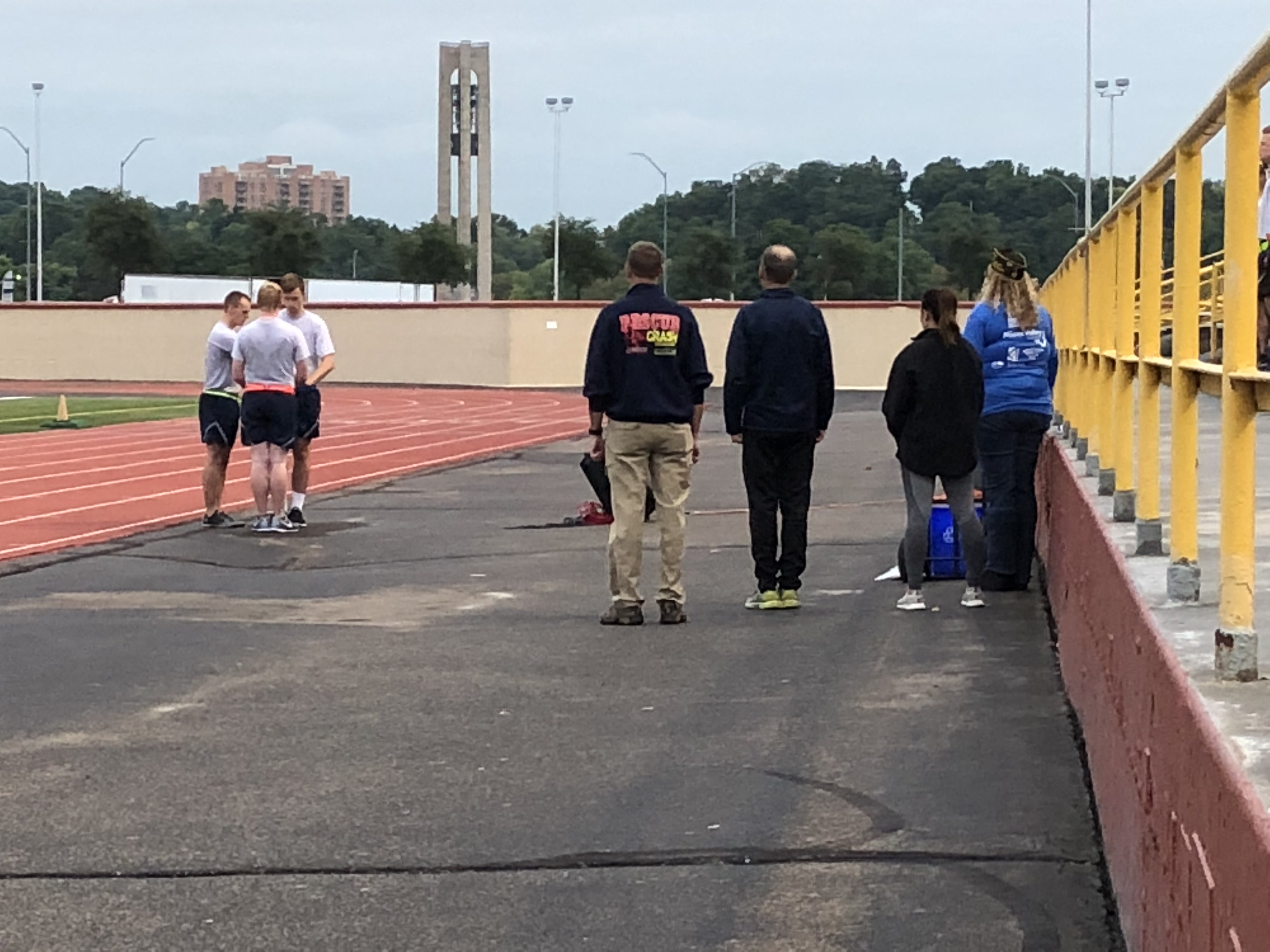Dayton Docket

Tuesday September 11, 2018
Law Student Group Part of 9-11 Memorial Stair Run
By Marissa Waters
More than 100 cadets from Wright State’s Air Force and Army ROTCs completed a 9/11 Memorial Stair Run at Welcome Stadium. The cadets and other participants ran 2,107 stairs in 56 minutes, honoring the sacrifice of first responders who gave their service and their lives on September 11, 2001. A few cadets even wore ruck sacks or body armor to emulate the 60 pounds of gear first responders were wearing when they entered the Twin Towers. Motivating music was blasting and cadets unable to participate were cheering the others on and high-fiving them as they began their next lap. As the event went on and energy began to give out, a song with the lyrics “one foot in front of the other” seemed to encourage the cadets to keep going. UDSL student Sarah Kiefer, who is also a member of Wright State’s Air Force ROTC was in attendance.David Young, Beavercreek Township Fire Department Battalion Chief, shared his memories as a member of Ohio Task Force 1, a group of first responders in the Dayton area that are FEMA trained and certified to respond to disasters, whether natural or manmade.
On September 11, 2001, Young was at work like any other day when the towers were hit. He got the call and by 5PM, he and the rest of Ohio Task Force 1 had their trucks loaded and began rolling for New York City. “I didn’t get to go home and tell my family goodbye,” he says, “though I did get to talk to my wife on the phone for a few minutes.” (Young reminds me that this was before cell phones were commonplace and he did not own one.) The team drove through the night and reached ground zero by 5AM and began set up, then began their shifts, 12 hours on, 12 hours off, with operations running 24 hours a day for 10 days. Young had been awake for 48 hours straight before he got to rest.
Young recalls that first shift; he was on the night crew in an area of ground zero without lights, electricity, or communications. “It was eerily quiet and dark,” he says. But they pushed though. Young said there was so much happening around him and his “brain couldn’t process it all. I just didn’t think about it.” Young and his team went about their search and rescue work, clearing elevators and buildings in the 16 acres of Ground Zero. They only found one person alive; a wheelchair bound woman who was unable to leave her apartment or communicate for help.
“Everything was gray”, he said. “The buildings, the people, everything. I didn’t realize what it was at first. … The air was so thick that you would get hit in the face with things, like snow hitting your face in winter.” He later learned that the gray was concrete dust. Three days in, it rained. Rain is usually a bad thing during a search and rescue because it slows down operations. But, in this case Young said, it was helpful. “It washed all the gray away and the color came back to the city. It brought about a sense of normalcy and there was a notable change in the mood at Ground Zero.”
Seventeen years after the 9/11 attack on our nation, Ohio Task Force 1 was en route to the East Coast, in response to Hurricane Florence.
Share
Topics
